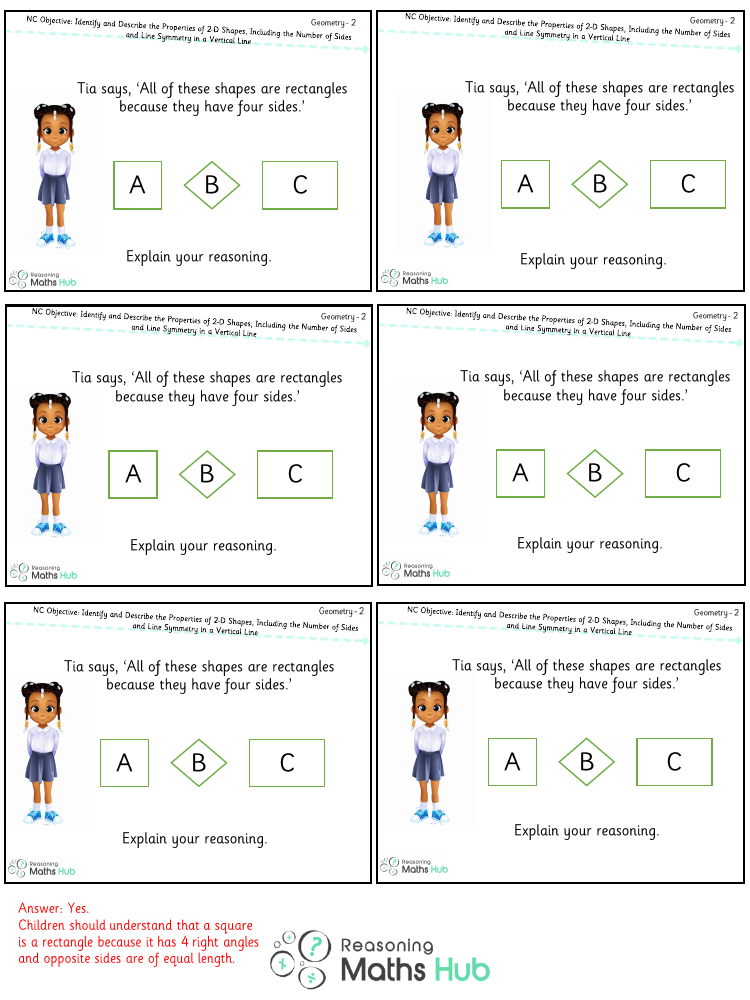Identify and describe the properties of 2D shapes 2 - Reasoning

Maths Resource Description
The study of 2D shapes involves understanding their properties, which include characteristics such as the number of sides, lengths of sides, angles, symmetry, and whether the sides are parallel or not. These properties help to define and differentiate between various two-dimensional shapes, such as squares, rectangles, triangles, circles, and polygons like pentagons, hexagons, and octagons. Reasoning about these properties allows students to identify and classify shapes, as well as solve problems related to them.
For example, a square is identified by having four equal-length sides and four right angles, making it a regular polygon with equal angles. It also has four lines of symmetry. A rectangle also has four sides and four right angles but differs from a square in that only the opposite sides are equal in length. It has two lines of symmetry. Triangles can be classified based on their sides (such as equilateral, isosceles, or scalene) or angles (acute, right-angled, or obtuse). Circles are unique among 2D shapes in that they have no sides or angles, but are defined by a continuous curve equidistant from a central point, and have an infinite number of lines of symmetry. Reasoning tasks may involve comparing these properties to determine relationships between shapes, such as how changing one property can transform one shape into another.
